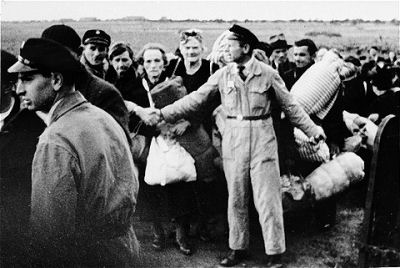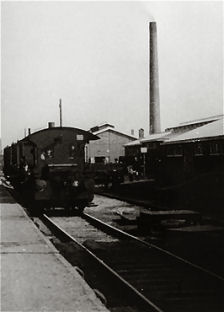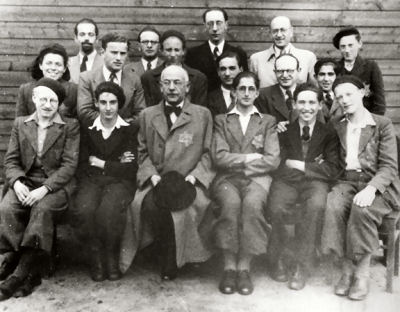|
Westerbork was located in
Hooghalen, ten kilometers
north of Westerbork in the
northeastern Netherlands.
|

Arrival of a transport
at the Westerbork camp. Westerbork,
the Netherlands, 1942.
|
Westerbork functioned as an
assembly point for
Roma and Dutch Jews for
transport to other Nazi
concentration camps.
|
|

The
train station in Westerbork. The smokestack of the
new Ketelhuis is visible in the background,
1942-Apr 1944. |

A
view of the Westerbork camp, the Netherlands,
between 1940 and 1945. Courtesy of YIVO. |

An
elderly Jewish couple on their way from Hooghalen to
the Westerbork transit camp. A member of the Dutch
constabulary stands behind them, Oct 1942.
|
|
Between July 1942 and
September 1944, almost
every Tuesday a cargo
train left for the
Auschwitz-Birkenau,
Sobibór, Bergen-Belsen
and Theresienstadt
concentration camps. |

Group portrait of
Jewish prisoners in the Westerbork transit camp,
May-Jun 1942.
|
In the period from 1942 to 1945, a total of 107,000
people passed through the camp on a total of 93
outgoing trains. Only 5,200 of them survived, most
of them in Theresienstadt or Bergen-Belsen, or were
liberated at Westerbork. |